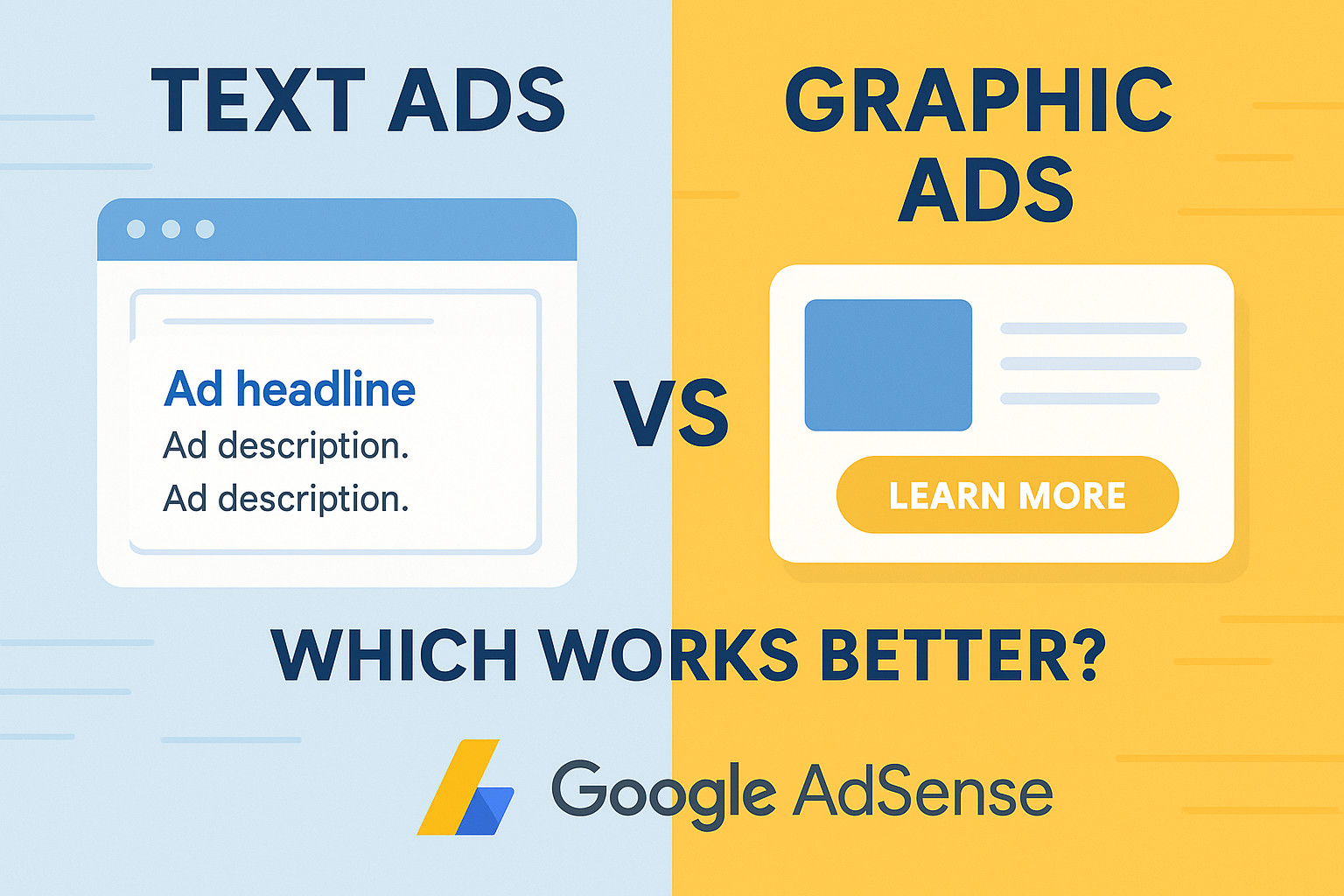Text vs. Graphic Ads in Google AdSense: Which One Actually Performs Better?
🧠 Opening Hook:
Whether you're a publisher optimizing your layout or an advertiser choosing where to spend your budget, this question matters more than you think.
Let’s break it down with clarity, no fluff, and some good old-fashioned real talk.
🎯 The Basics: What’s the Difference?
Both formats are available through AdSense, and both pay differently depending on performance.
🧩 User Behavior: Who Sees What, and Why?
Here’s the wild thing: graphic ads are more visible, but text ads are more clickable.
Why?
👀 Banner Blindness Is Real
Most users have been exposed to banner ads since the MySpace era. They've trained their brains to ignore graphics on sidebars, headers, and footers.
This is called “banner blindness”, and it’s especially deadly to image ads that look like old-school billboards.
📘 Text Ads = Native Feel
People reading content are already processing text, so they’re more open to clicking other text-based options—like a relevant ad.
💸 Conversion Power: Who Wins?
Surprisingly, text ads tend to convert better.
Why?
-
They usually contain more relevant, keyword-targeted copy
-
They're triggered by the user's search intent
-
They look and feel like part of the page
Many image ads are even paid on a CPM (cost per thousand views) basis, not CPC—so if you're a publisher, that might mean lower earnings per user.
⚙️ Control and Customization
Publishers and advertisers have very different experiences when it comes to control.
For Advertisers:
-
Text ads are easier to create, cheaper, and easier to test.
-
Graphic ads require design, QA, and compliance checking. Plus, they’re harder to scale across multiple campaigns.
For Publishers:
-
Text ads are more predictable and less risky.
-
Graphic ads can sometimes display low-quality creatives, misleading images, or even sketchy visuals (especially from display networks with looser filters).
In short: text ads offer more flexibility and safety for both sides.
📊 Market Demand: Who’s Buying What?
Small businesses, affiliate marketers, bloggers—they all use text ads because:
-
It’s fast to create
-
It costs nothing
-
It’s easier to optimize over time
Graphic ads? Mostly used by:
-
Big brands
-
Agencies with design budgets
-
Product launches with custom creatives
So if you’re a publisher trying to maximize fill rate, text ads usually have more takers = more opportunities to earn.
💰 Cost and Earnings
Let’s talk money.
Creating a text ad?
-
Takes 10 minutes
-
Costs zero
Creating a graphic ad?
-
Could cost $50–$300
-
Requires revisions
-
Might underperform
This means advertisers are more likely to spend more budget on the ad itself (CPC) when they’re not wasting money on fancy visuals.
That’s good news for you, the publisher. More CPC = more RPM = more 💸
🧠 Trust Factor
Let’s not ignore psychology.
Google itself leans more toward text-focused optimization—just look at how native ad formats are dominating modern placements.
🏆 So... Which One Wins?
🚀 Final Verdict: Use Both, But Prioritize Text
They bring better performance, more advertiser competition, and a stronger long-term ROI for content sites.
If you’re serious about AdSense, treat your site like a business. Optimize layouts, track performance, and remember:
“Ads that blend in—tend to cash out.”
